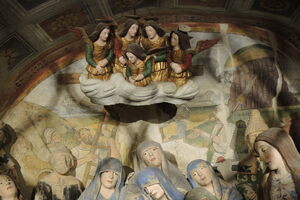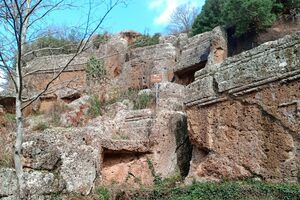Hermitage of Saint Venantius in Raiano, Italy

A short trek from the small town of Raiano, in the Italian region of Abruzzo, the narrow gorges of the Aterno river carve their way through the rugged mountains that rise above.
Nestled on a rocky outcrop and partly built across the gorges is a medieval hermitage named after Saint Venantius, martyr and patron of the university town of Camerino. Like other sites around Abruzzo, hermits and religious figures inspired by the life of Pope Celestine V (the hermit-Pope Peter) fashioned hermitages, chapels, and small sanctuaries out of the rocky outcrops, gorges, and caves across this wild, rugged region.
The site consists of a church with altars dedicated to Saint Peter Celestine and Saint John the Baptist, a hermitage, a small cave, a room with ex-voto tablets, and a two-tiered loggia built directly over the river with a small chapel. The loggia was most likely designed to provide safer access to the cave below, as an alternative to the steep stone staircase.
The cave is said to preserve the traces of the saint and local devotees rub their backs against a stone inside to heal arthritis and back issues. On the way to the church, holes inside the cliffs are said to be the marks of Saint Venantius’s elbow, head, feet and also contain healing properties. Devotees also harvest “il grano di San Venanzio,” a local herb that is said to protect those who keep it inside their homes.
In the small underground chapel, a stunning 16th-century terracotta scene known as a “Compianto” depicts the grief of the Virgin Mary Magdalene and other women as they gather around the crucified body of Christ.





